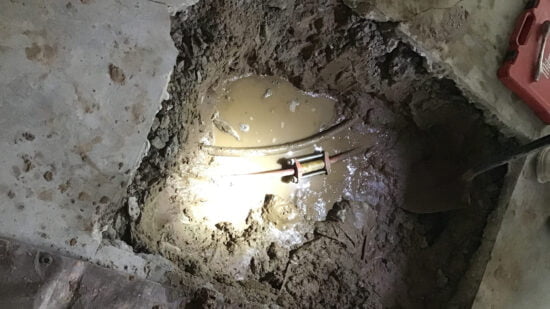At Roto-Rooter, we understand that water leaks are not just a nuisance but a potential hazard to your property. Whether it’s a slow drip or a sudden burst, each leak can lead to significant water waste and damage. In this article, we will explore the common causes of water leaks, effective detection techniques, and the necessary steps to repair and prevent future issues.
Causes of Water Leaks
Water leaks can originate from various sources within a home or building, each with its unique challenges. Some of the most common causes include:
- Aging Infrastructure: Over time, plumbing materials can degrade. Pipes made from materials like galvanized steel or copper are susceptible to corrosion and rust, leading to leaks.
- High Water Pressure: While strong water pressure is convenient, excessively high pressure can strain pipes, fittings, and fixtures, leading to leaks.
- Temperature Fluctuations: Extreme changes in temperature can cause pipes to expand and contract, which may result in cracks and leaks, especially in regions with cold winters.
- Clogged Lines: Blockages can cause backups and overflows, stressing pipes and connections that may eventually leak if not properly addressed.
- Poor Installation: Incorrectly installed plumbing fixtures or pipes can lead to leaks. This underscores the importance of professional installation and regular maintenance.
Detection of Water Leaks

Identifying the source of a water leak is crucial in preventing further damage and conserving water. Here are several effective methods we use at Roto-Rooter:
- Visual Inspection: Regular inspections of all accessible plumbing, including pipes, faucets, and appliances, for signs of moisture, rust, or mineral deposits can often detect leaks early.
- Meter Check: For hidden leaks, we recommend checking the water meter. By turning off all water inside and outside the property and observing the meter, you can determine if the system is leaking.
- Dye Testing: This simple test involves adding a safe dye to toilets and drains to see if the color appears where it shouldn’t, indicating a leak.
- Infrared Cameras: Advanced tools like infrared cameras can detect temperature differences caused by the presence of water, helping to pinpoint the exact location of a leak behind walls or under floors.
- Acoustic Sensors: These devices can detect the sound of water escaping from pipes and are particularly useful for underground or hidden leaks.
Solutions and Preventative Measures
Once a leak is detected, timely and effective repair is essential. Here’s how our plumbers here at Roto-Rooter approach repairs and prevention:
- Immediate Repairs: Addressing leaks promptly prevents more extensive damage and higher repair costs. This may involve replacing damaged pipes, tightening fittings, or sealing leaks.
- Regular Maintenance: We encourage regular maintenance schedules that include inspections and cleaning to ensure plumbing systems are in good condition and to catch issues before they lead to leaks.
- Pressure Regulation: Installing pressure-reducing valves can help manage water pressure within safe limits, reducing the strain on your plumbing system.
- Upgrade Old Plumbing: Replacing old, corroded pipes with modern materials like PVC or PEX can significantly reduce the risk of future leaks.
- Educate Homeowners: Educating property owners on what to look for and how to perform basic preventative maintenance can go a long way in preventing leaks.
Conclusion
Water leaks, if left undetected and untreated, can lead to severe property damage and increased utility costs. At Roto-Rooter, we specialize in not only fixing leaks but also helping you understand and prevent future plumbing failures. Remember, the key to managing water leaks effectively is early detection and prompt action. For any concerns or leak detection needs, trust the experts at Roto-Rooter to provide reliable and efficient service.